What makes
Norwex Skincare
unique?

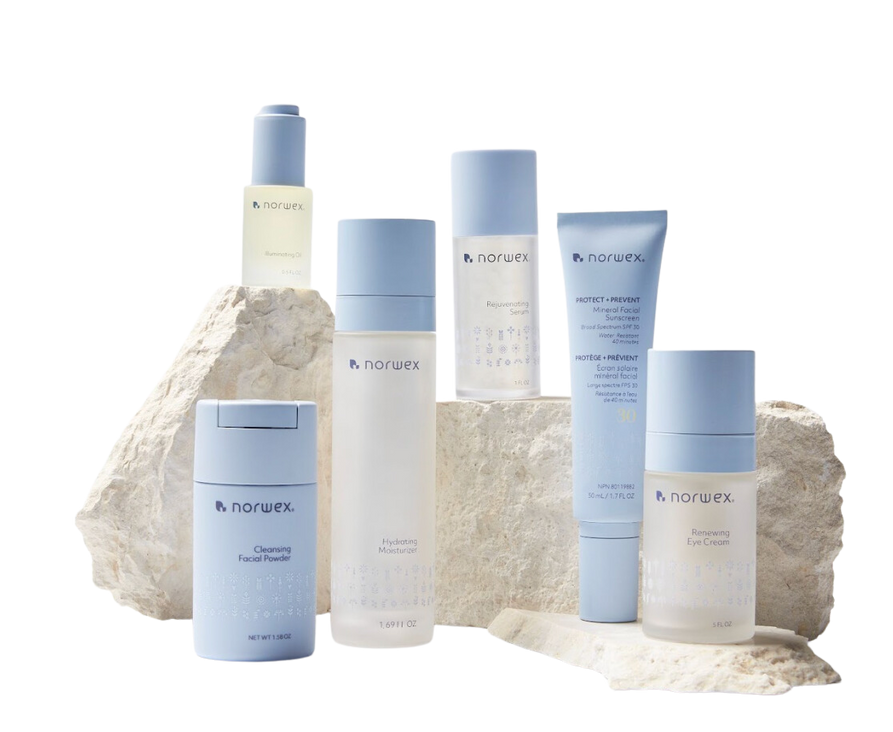


Norwex Skincare helps you live cleaner, safer, better.
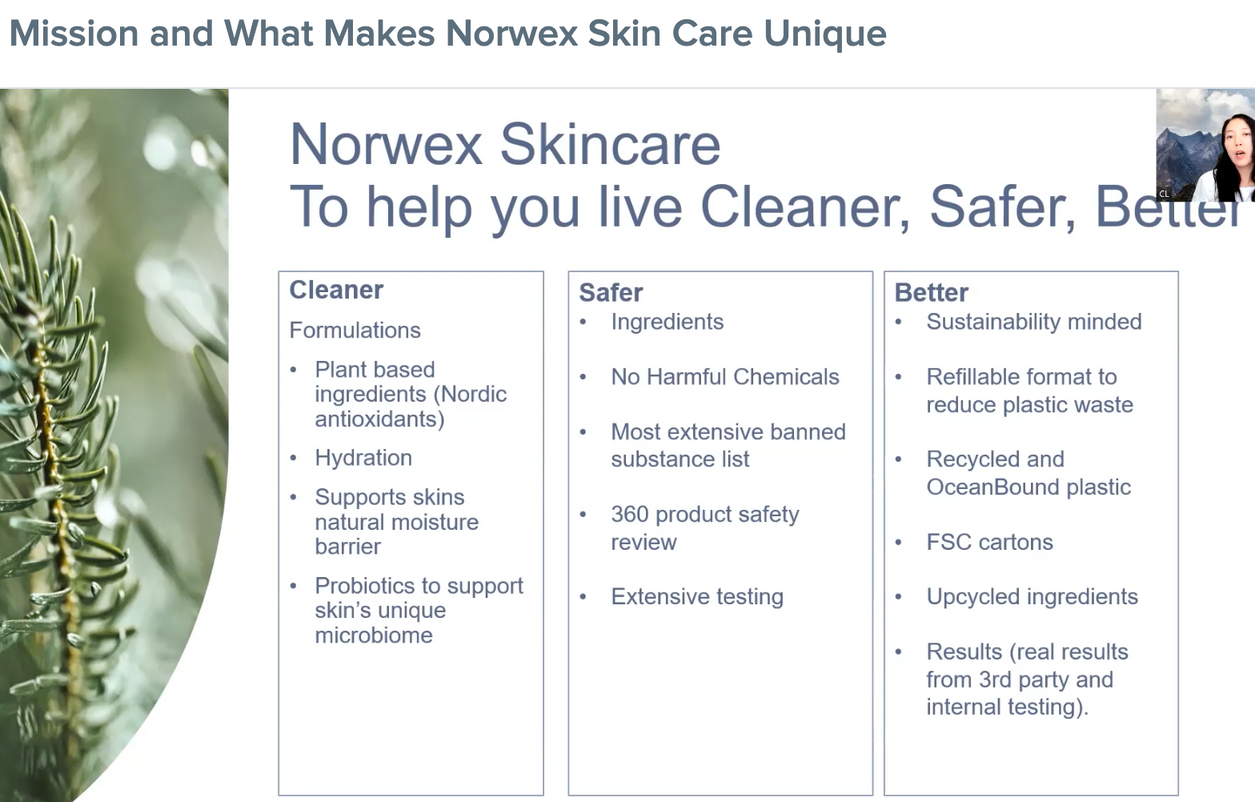
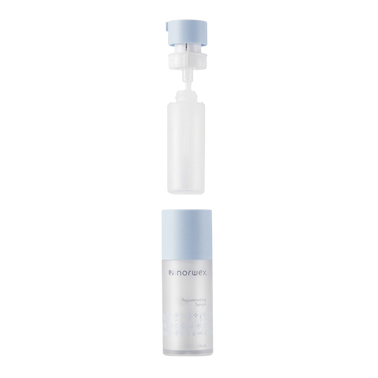
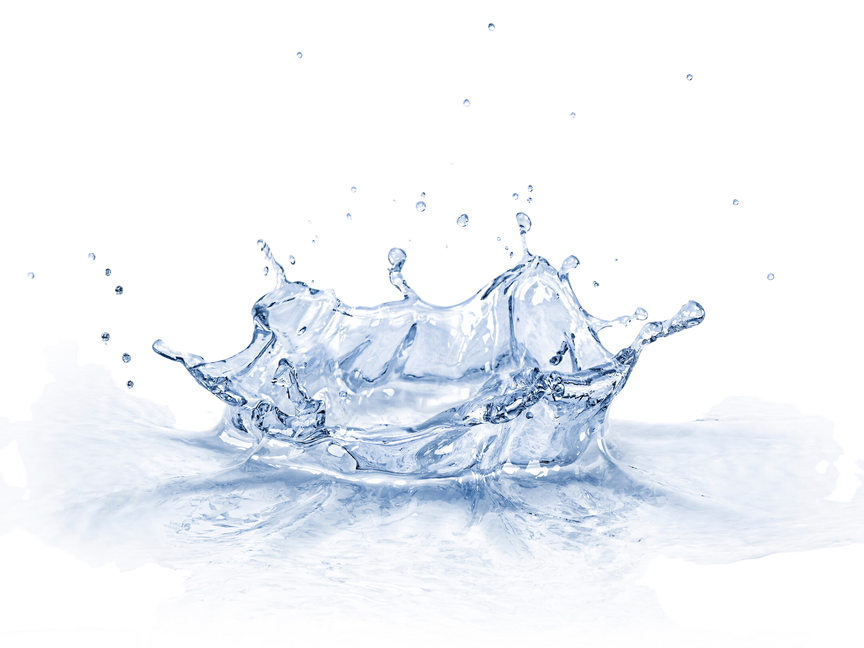
Specific skincare ingredients can be found here:


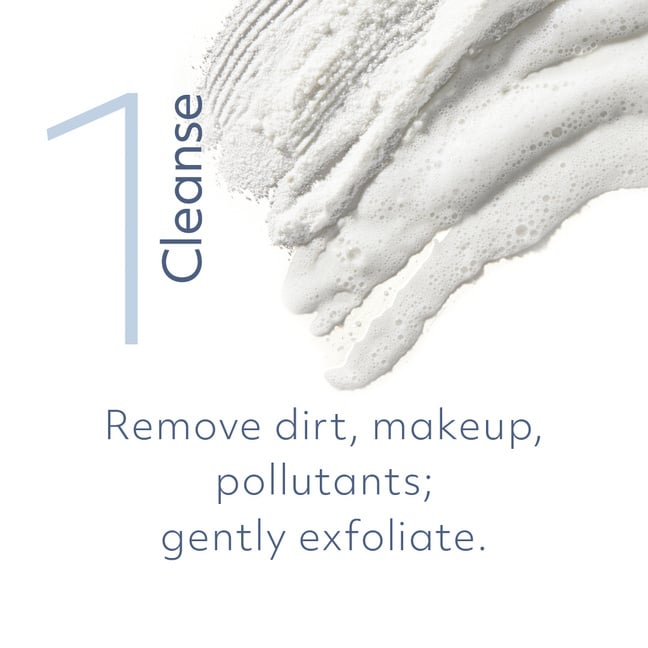
- Dispense small amount of Cleansing Facial Powder into wet hand and rub together to create a smooth, cleansing foam. Apply to face in a circular motion & rinse thoroughly using Face & Body Cloth.
- Formulated with biobased surfactants, Nordic antioxidants, and prebiotics for a healthy, fresh faced feel. Rice bran wax and a natural enzyme booster gently exfoliate, instantly revealing smoother, healthier-looking skin!
- Benefits of ingredients used include: Moisturizing with high antioxidants, skin repair, anti-inflammatory, improved skin tone, acne-fighting, exfoliating, skin soothing, collagen production stimulation, microbiome support and balance, and more!





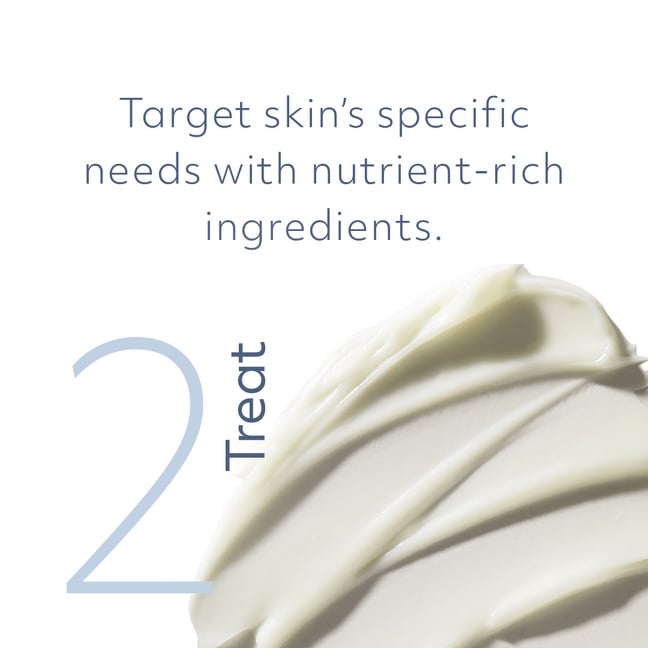
- Using ring finger, lightly pat small amount of Renewing Eye Cream around eye area. Safe to apply to entire eye-area up to lash line. Use morning and night. This is an ultra-hydrating gel-cream that is infused with glacial water, vitamin C, probiotics, hyaluronate, and Nordic antioxidants.
- Gently pat 1 pump of Rejuvenating Serum onto cleansed face, neck, and décolletage. Use morning and night. This serum provides essential nourishment and targeted moisturization. It utilizes peptides, niacinimide, glacial water, and Nordic antioxidants to reduce visible signs of aging. It works to brighten skin, improve skin tone, and improve elasticity.
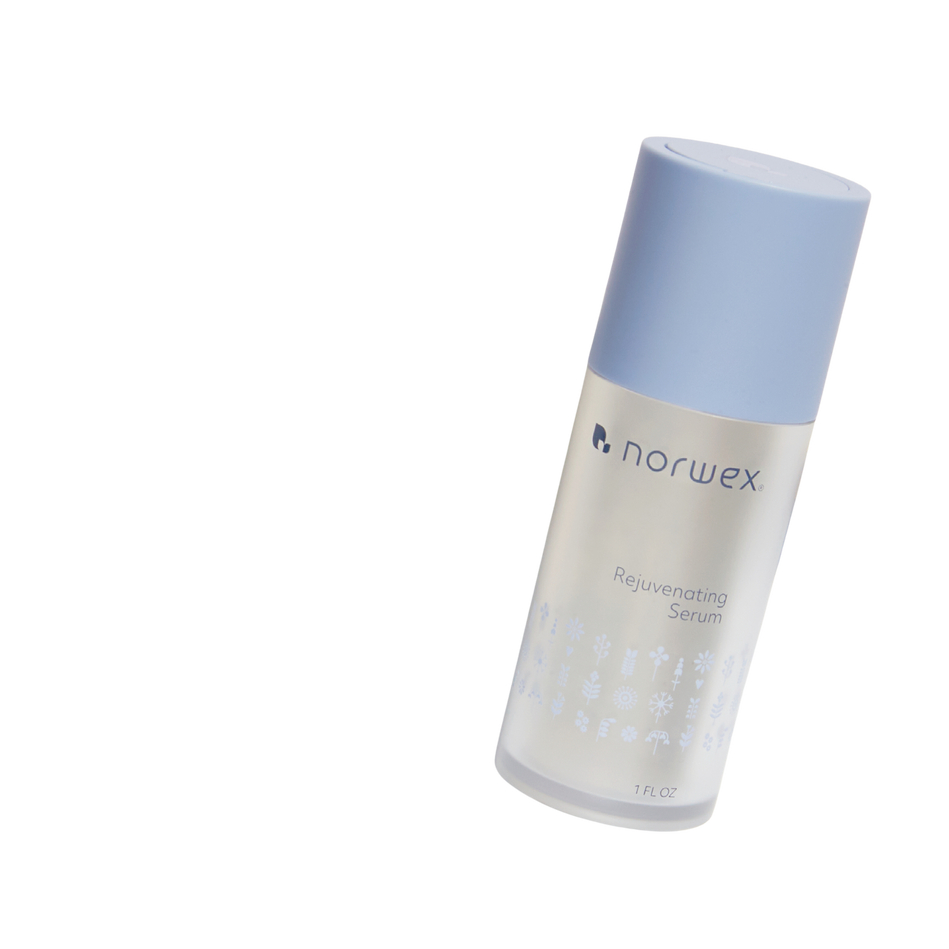




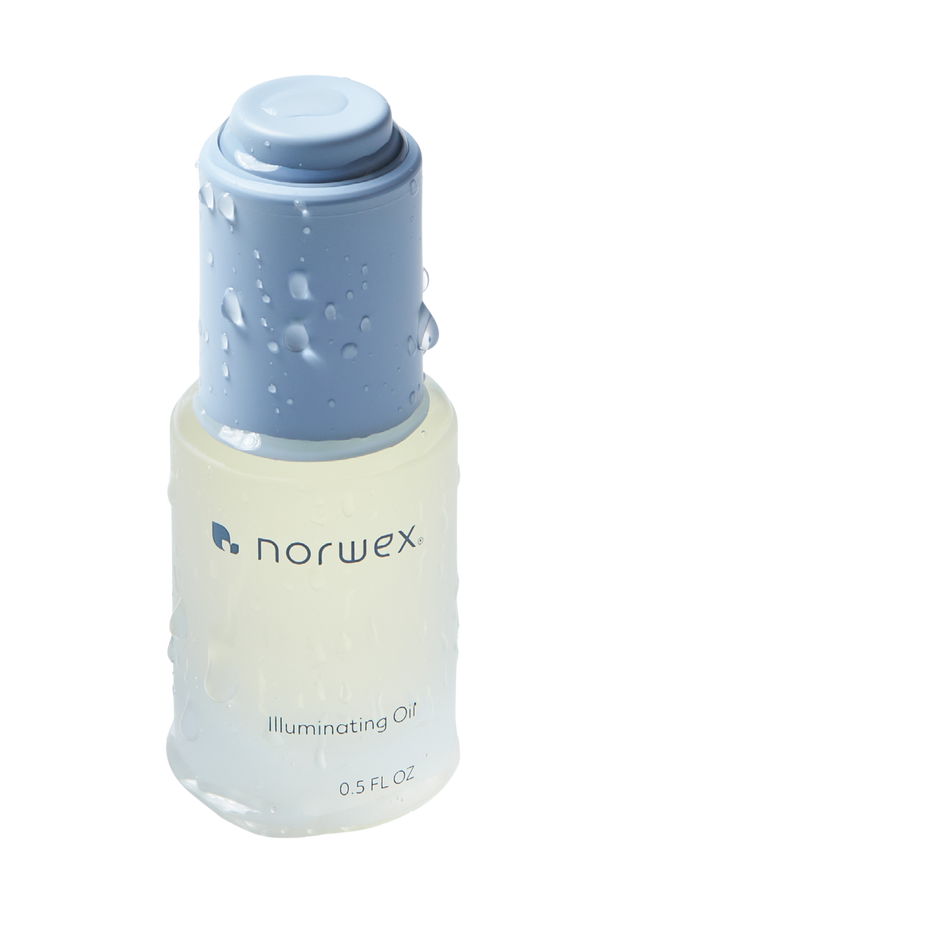

- For these two products, many people like to “cocktail” them together in their hand before applying. This allows you to customize the amount of hydration, according to YOUR skin’s needs. Gently massage onto face, neck, and décolletage in small, upward circular motions morning and night.
- The Hydrating Moisturizer is a silky, lightweight gel-cream that hydrates, protects, renews, and smooths, infused with glacial water, probiotics, hyaluronate, and a rich blend of Nordic antioxidants. It supports a healthy moisture barrier and skin microbiome, leaving the skin feeling smoother and glowing.
- The Illuminating Oil is rich in Nordic antioxidants and 15 skin-healthy oils to moisturize and restore that inner glow. Bilberry, red algae, black oat, and arctic cloudberry protect against free radicals. Also great for dry hair ends, beards, and cuticles. May use with or separately from the Hydrating Moisturizer, morning and night.

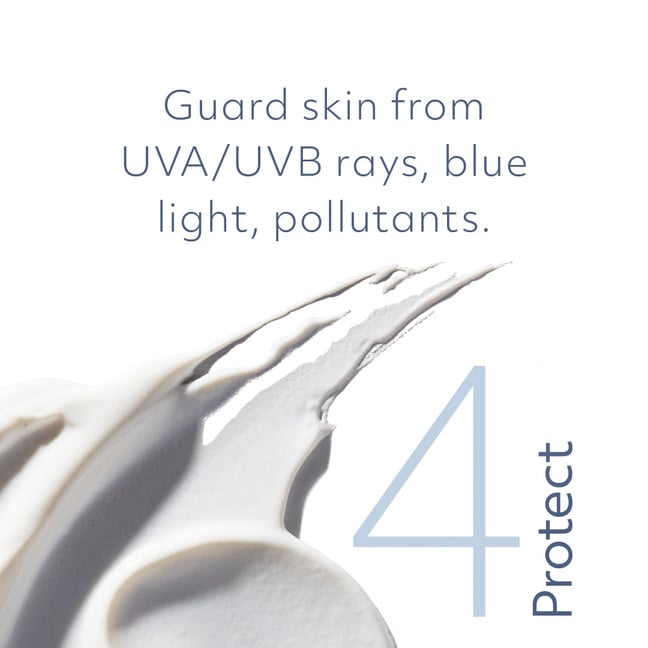
- Simple, clean, natural UVA/UVB Wrinkle Defense Formula that includes rich, nutritious ingredients to support your skin’s health!
- The Protect + Prevent Mineral Facial Sunscreen is perfect for layering over your skin care products before applying your makeup. It offers broad-spectrum blue light protection, is water & sweat resistant, and fast-absorbing without sticky or white reside.
- Apply to face, neck, and décolletage as the last step of your morning skincare routine.



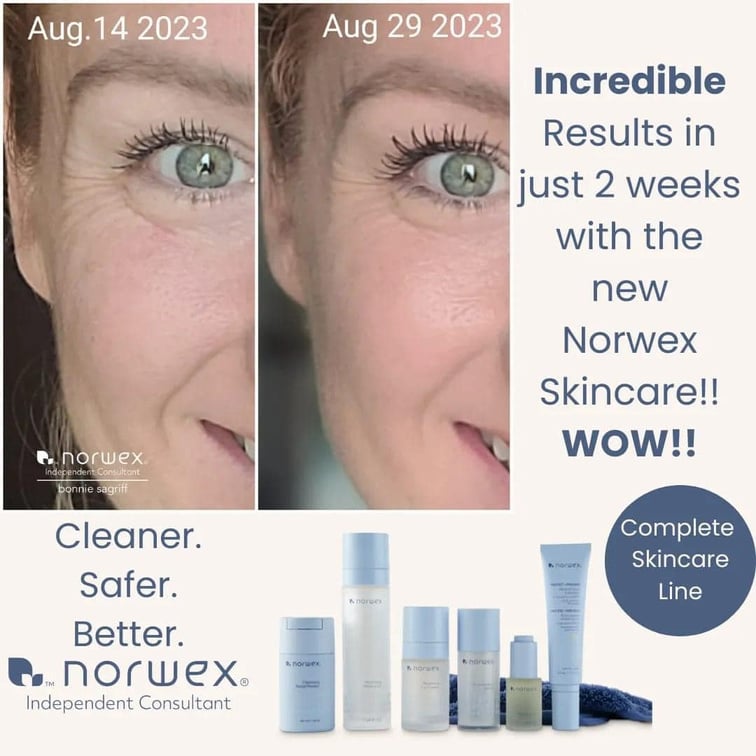



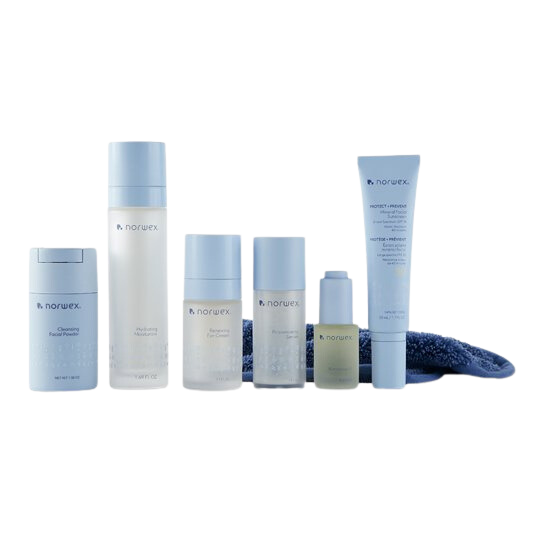
Complete Skincare Set
$320.94 $295.99

To save 10% on your upcoming refill orders, start an AutoShip Order!
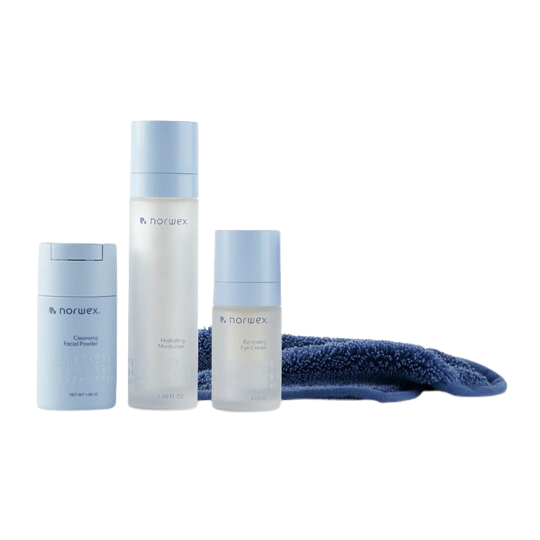
Essentials Skincare Set
$149.97 $138.99


The European Union has banned 1,600+ chemicals from personal care products.
In the United States, only 11 out of 10,000+ chemicals have been banned by the FDA.
Food and Drug Administration
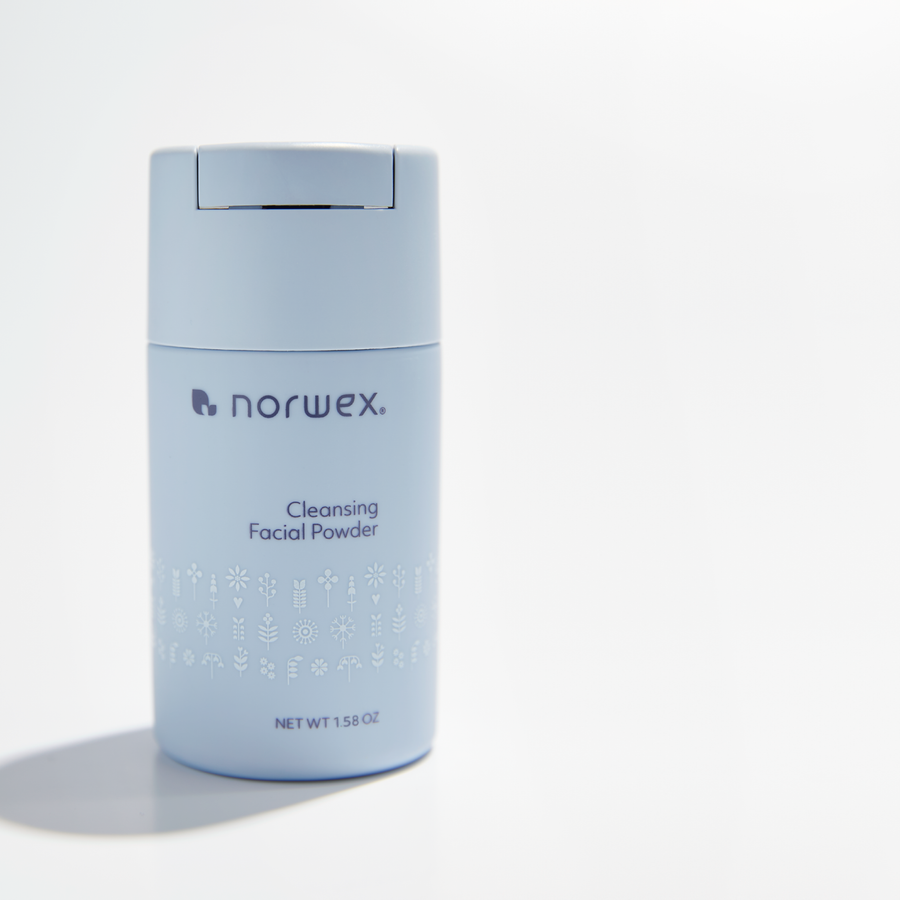
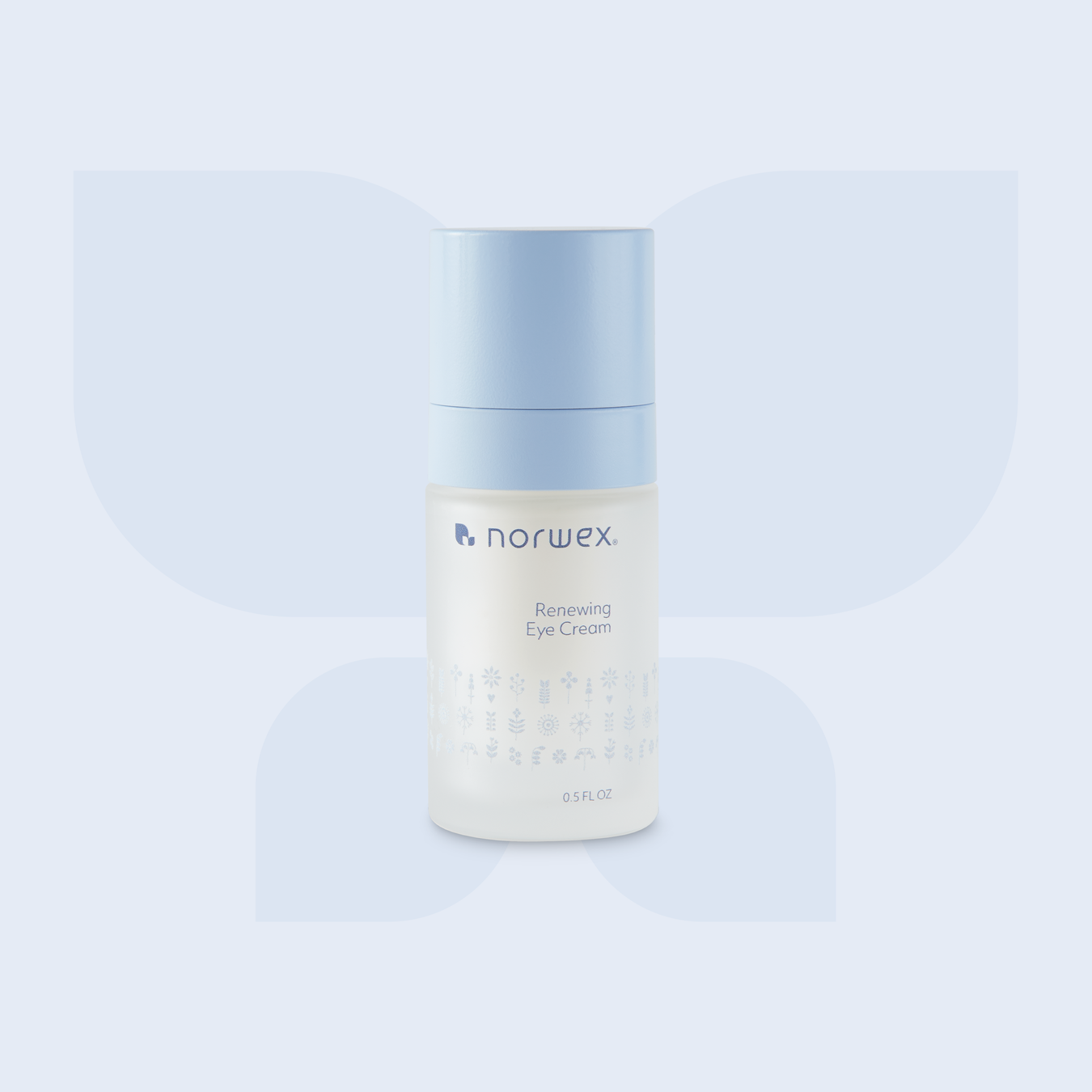
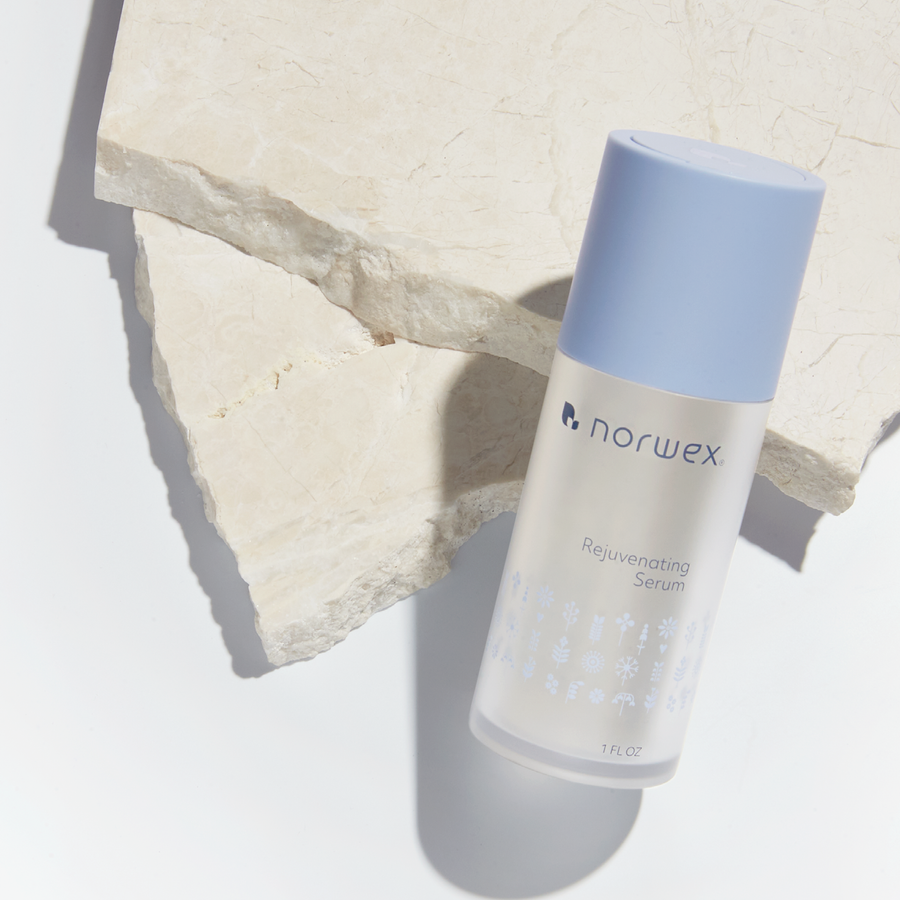
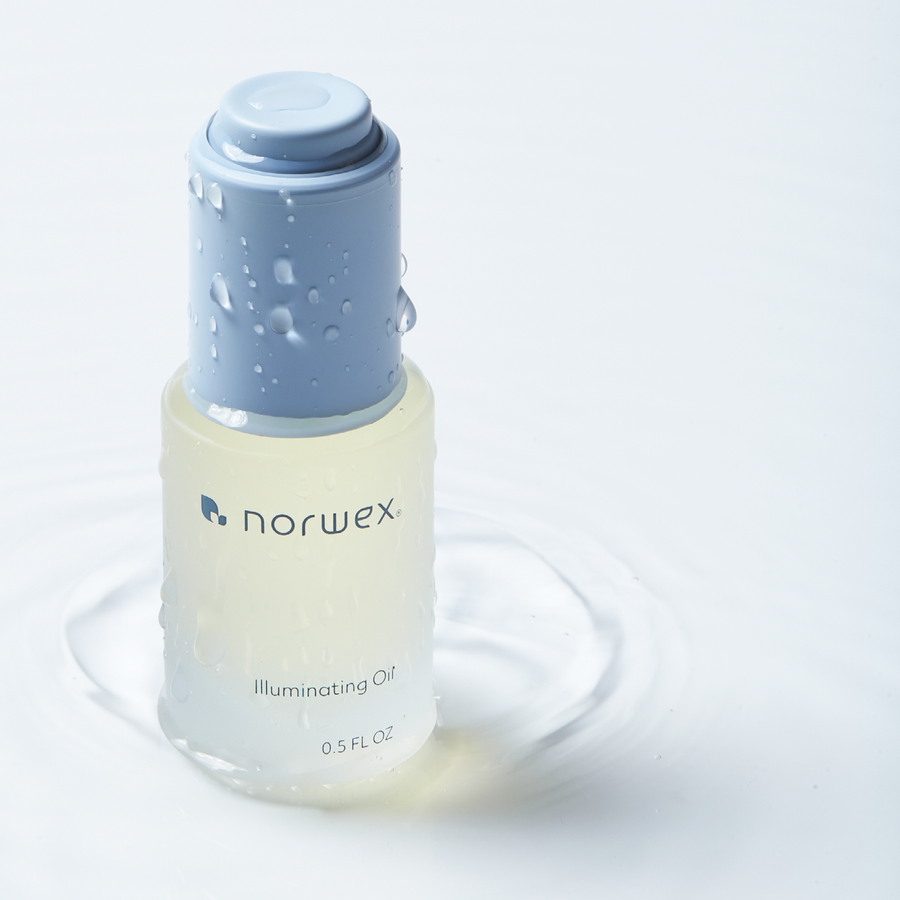
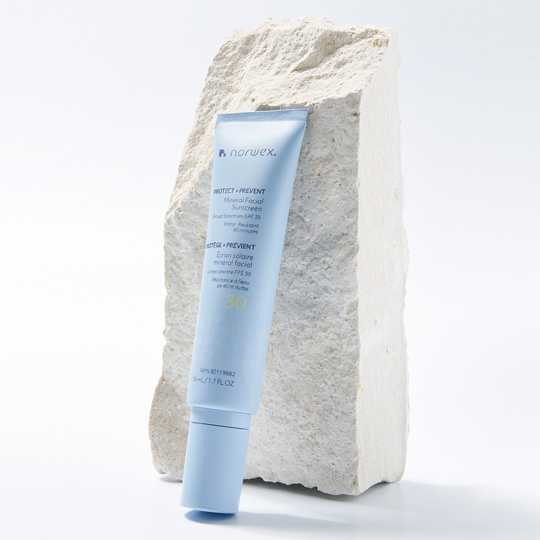

KEY INGREDIENT
Lingonberry
Featured in: Cleansing Facial Powder * Rejuvenating Serum * Renewing Eye Cream * Hydrating Moisturizer * Protect & Prevent Sunscreen
Original graphic credit to Kim Miles & Jody Odell Zimmerman
- Antioxidant-rich: Lingonberries are packed with antioxidants, such as Vitamin C & flavonoids, which protect the skin from oxidative stress caused by free radicals, helping to prevent premature aging and skin damage.
- Brightening and even skin tone: The high Vitamin C content in lingonberries can contribute to a brighter complexion and fade dark spots, promoting a more even skin tone.
- Anti-inflammatory properties: Lingonberries contain compounds that soothe and calm irritated skin, making them suitable for individuals with sensitive or reactive skin.
- Moisturizing: When used in skincare products, the natural oils in lingonberries help hydrate and nourish the skin, giving it a smoother and more supple appearance.
- Skin softening: Lingonberries contain fruit acids that gently exfoliate the skin, promoting a softer and smoother texture.
- Anti-aging effects: The combination of antioxidants and essential fatty acids in lingonberries can help combat signs of aging, such as fine lines and wrinkles, by supporting skin elasticity and firmness.




Cleansing Facial Powder * Rejuvenating Facial Serum * Renewing Eye Cream * Hydrating Moisturizer * Illuminating Oil * Protect & Prevent Sunscreen
Sea Buckthorn
KEY INGREDIENT
- Moisturizing: Omega-3, 6, 7, and 9 nourish & hydrate the skin
- Anti-aging: Vitamin C & E neutralize free radicals and protects the skin from oxidative stress (which contributes to premature aging).
- Skin repair: Promoted by Omega-7.
- Anti-inflammatory: Reduces redness & sensitivity.
- Skin brightening: Lingonberries Provitamin A brightens & evens skin tone.
- Acne fighting: Antibacterial & anti-inflammatory beneficial for acne-prone skin.





Cleansing Facial Powder * Rejuvenating Facial Serum * Renewing Eye Cream * Illuminating Oil * Hydrating Moisturizer * Protect & Prevent Sunscreen
Cloudberry
KEY INGREDIENT
- High in antioxidants: Cloudberry is rich in antioxidants, including Vitamin C & E, which help protect the skin from oxidative stress & environmental damage, reducing the signs of aging.
- Moisturizing & Nourishing: The berry's natural oils & emollient properties provide deep hydration & nourishment to the skin, leaving it soft & supple.
- Skin brightening: Cloudberry's Vitamin C content contributes to a brighter complexion & can help fade dark spots, promoting more even skin tone.
- Anti-inflammatory: Contains anti-inflammatory compounds that can sooth and calm irritated skin, making it beneficial for those with sensitive or reactive skin types.
- Repair & Rejuvenation: The berry's nutrients support skin repair processes, helping to improve skin texture & overall appearance.
- Sun protection: Cloudberry seed oil may offer some natural sun protection properties, aiding in shielding the skin from harmful UV rays.



KEY INGREDIENT
Ashwagandha
Protect & Prevent Mineral Facial Sunscreen
Original graphic credit to Kim Miles & Jody Odell Zimmerman
- Protection: Protects skin cells from the harmful effects of HEV blue light, including related cellular damage.
- Collagen Production: Anti-inflammatory properties can help reduce inflammation & soothe the skin.
- Elastin: Increases a protein forming the main constituent of elastic connective tissue, found especially in the dermis of the skin.
- Stress Reduction: This herb is rich in antioxidants that can combat oxidative stress caused by free radicals, preventing premature aging & protecting the skin from environmental damage.
- Rejuvenation: Ashwagandha may support collagen synthesis, promoting skin elasticity and reducing the appearance of fine lines and wrinkles. Regular use of Ashwagandha in skin care products can contribute to a healthier, more radiant complexion.
- Brightening: As an adaptogenic herb, Ashwagandha can help alleviate stress, which can contribute to healthier skin by reducing stress-related breakouts & skin issues.
- Brightening Properties: This herb's antioxidants & nutrients may help even out skin tone, reduce hyperpigmentation, and promote a brighter, more luminous complexion.



KEY INGREDIENT
Glacial Water
Rejuvenating Facial Serum * Renewing Eye Cream * Hydrating Moisturizer
Graphic credit to Kim Miles & Jody Odell Zimmerman

- Purity: Pure & free from contaminants, making it suitable for sensitive skin types & less likely to cause irritation.
- Hydration: Rich in moisture, providing intense hydration to the skin, helping to maintain its natural moisture balance.
- Mineral Infusion: Essential minerals like calcium, magnesium, & potassium nourish the skin and support its overall health.
- Cooling & Soothing: Reducing redness & inflammation.
- Antioxidant Properties: Antioxidant properties can help combat free radicals & premature aging.


KEY INGREDIENT
Niacinamide
Rejuvenating Facial Serum
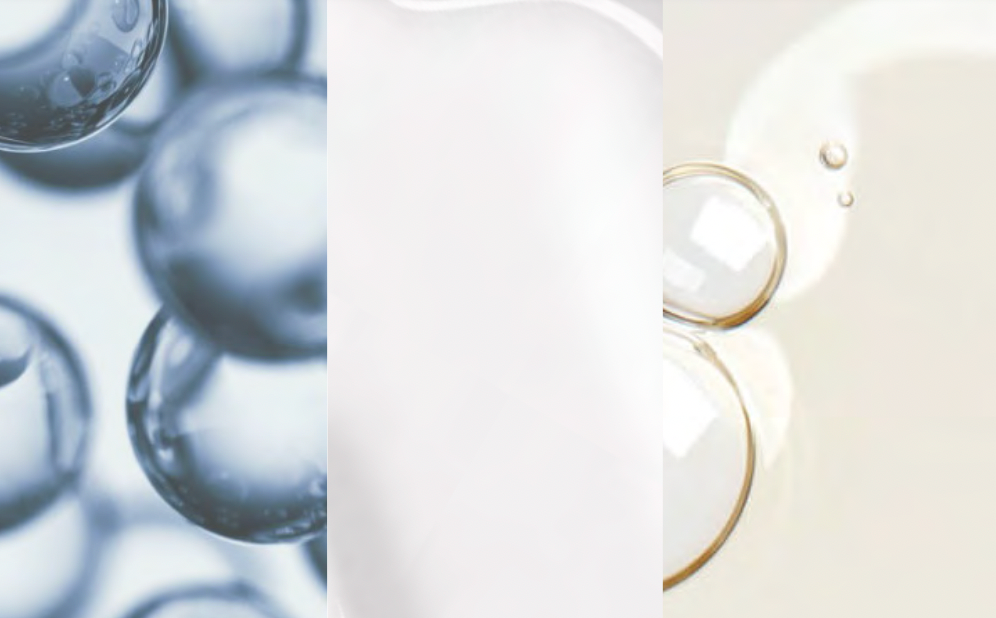
- Skin Tone Improvement: It can reduce the appearance of dark spots, hyperpigmentation, and uneven skin tone, leading to more even complexion.
- Skin Barrier Support: Niacinamide helps strengthen the skin's protective barrier, reducing moisture loss & enhancing resilience to external aggressors.
- Hydration: It boost production of ceramides, a type of lipid that retains moisture in the skin, leading to improved hydration levels.
- Anti-aging effects: Niacinamide has antioxidant properties that can combat free radicals, helping minimize signs of aging, such as fine lines & wrinkles.
- Oil Control: Niacinamide helps regulate sebum production, making it suitable for individuals with oily or acne-prone skin.
- Anti-inflammatory Properties: It can calm redness & soothe irritated skin, making it beneficial for sensitive or reactive skin types.
- Minimizes pore appearance: Niacinamide can help reduce the appearance of enlarged pores, leading to smoother-looking skin.


KEY INGREDIENT
Prebiotics
Cleansing Facial Powder
- Microbiome Support: Nurturing environment for the beneficial bacteria that naturally reside on the skin, known as the skin's microbiome. A balanced & healthy microbiome can enhance the skin's overall health and appearance.
- Skin Barrier Function: Promoting the growth of friendly bacteria, prebiotics help strengthen the skin's natural barrier function. A robust skin barrier can better defense against external aggressors & minimize moistures loss.
- Soothing & Calming: Soothing properties that can help alleviate skin irritation, redness, & inflammation. This can be particularly useful for sensitive or reactive skin types.
- Skin Balance: Help maintain a balanced environment on the skin's surface. This balance can assist in reducing excessive oiliness or dryness, as well as addressing common skin issues.
- Anti-aging: Skin barrier & microbiome can improve the skin's resilience and appearance.


KEY INGREDIENT
Probiotics
Renewing Eye Cream * Hydrating Moisturizer
- Microbiome Balance: Support & maintain a balanced skin microbiome, the community of beneficial microorganisms living on the skin's surface. A balanced microbiome is essential for a healthy skin barrier & overall skin health.
- Strengthen Skin Barrier: Strengthen the skin's natural barrier function, improving its ability to retain moisture & protect against environmental stressors, such as pollution or UV rays.
- Soothing & Calming: Soothe & calm irritated or sensitive skin by promoting a healthier environment for the skin's microbiome. They may reduce inflammation & redness associated with various skin conditions.
- Acne Management: Antimicrobial properties are beneficial in managing acne-prone skin by targeting harmful bacteria that contribute to breakouts.
- Hydration & Moisturization: Enhance the skin's hydration levels by promoting a healthier skin barrier, leading to plumper, more hydrated skin.


KEY INGREDIENT
Peptides
Rejuvenating Facial Serum
- Skin Rejuvenation: Collagen is a vital protein that maintains skin structure & firmness. By promoting collagen synthesis, peptides can help reduce appearance of fine lines & wrinkles.
- Anti-aging Effects: Antioxidant properties can protect the skin from free radical damage (a leading cause of premature aging). By neutralizing free radicals, peptides contribute to the prevention of wrinkles & other signs of aging.
- Skin Hydration: Humectant properties attract & retain more moisture in the skin. This helps improve skin hydration, making it smoother, plumper, & more radiant.
- Skin Barrier Support: Reinforce the skin's natural barrier function, which helps retain moisture, protect against external aggressors, and prevent moisture loss, leading to overall skin health.
- Skin Brightening: Regulates melanin production, which can lead to more even skin tone & reduction in appearance of dark spots & hyperpigmentation.
- Soothing & Anti-inflammatory: Anti-inflammatory properties help calm irritate or sensitive skin, reducing redness & swelling.
- Improved Skin Penetration: Enhance the penetration of other beneficial active ingredients, maximizing effectiveness.


KEY INGREDIENT
Red Algae
Rejuvenating Facial Serum * Illuminating Oil
- Skin Firming & Tightening: Amino acids promote collagen production, improving skin elasticity & reducing the appearance of fine lines & wrinkles.
- Antioxidant Protection: Various antioxidants, such as Vitamin A, C, & E, along with carotenoids, help protect the skin from free radicals & environmental damage, reducing signs of aging.
- Hydration: Polysaccharides & amino acids help lock in moisture & provide deep hydration to the skin, making it plump & supple.
- Anti-inflammatory Properties: Bioactive compounds have anti-inflammatory effects, helping to soothe & calm irritated skin, making it suitable for sensitive or reactive skin types.
- Brightening & Evening Skin Tone: Extracts can help fade dark spots & hyperpigmentation, contributing to a more even & radiant complexion.
- Nourishment & Revitalization: An abundance of vitamins & minerals nourishes the skin, promoting its overall health and revitalization.


KEY INGREDIENT
Upcycled Cranberry Seed Oil
Hydrating Moisturizer
- Antioxidant Rich: Antioxidants, including tocopherols (Vitamin E) & tocotrienols, which help protect the skin from oxidative damage caused by free radicals.
- Essential Fatty Acids: The balanced ratio of Omega-3, Omega-6, and Omega-9 fatty acids nourishes & moisturizes the skin, promoting a healthy & supple complexion.
- Anti-inflammatory: Soothe irritated or inflamed skin, making it suitable for sensitive or acne-prone skin types.
- Skin Barrier Support: The oil's high content of natural lipids reinforces the skin's protective barrier, reducing moisture loss & improving overall skin resilience.
- Vitamin C: Brightens the skin, evens out skin tone, & supports collagen production for firmer skin.
- Lightweight & Non-greasy: Texture absorbs easily into the skin without leaving a greasy residue, making it suitable for various skin types, including oily or combination skin.
- Anti-aging Benefits: Antioxidant & vitamin content, cranberry seed oil may help combat the signs of aging, such as fine lines & wrinkles, promoting a more youthful complexion.
- Emollient Properties: Softening & smoothing the skin's texture, leaving it feeling silky & hydrated.


KEY INGREDIENT
Black Currant
Renewing Eye Cream * Hydrating Moisturizer * Protect & Prevent Sunscreen
- Collagen Production: Nutrients, including Vitamin C, may support collagen production, enhancing skin elasticity & firmness.
- Omega Fatty Acids: Contains omega-3 & omega-6 fatty acids, promoting skin hydration & maintaining the skin's barrier function.
- Anti-inflammatory: Gamma-linolenic (GLA) in black currant helps reduce inflammation, making it suitable for soothing irritated or sensitive skin.
- Hydration: Hydrating & helps improve moisture retention, keeping the skin soft & supple.
- Skin Brightening: The Vitamin C in black currant can aid in brightening the complexion & reducing the appearance of dark spots or hyperpigmentation.
- Anti-Acne Properties: Anti-inflammatory properties of black currant can help calm acne-prone skin & reduce redness & swelling associated with breakouts.
- Nourishing & Revitalizing: Nutrient-rich composition of black currant nourishes & revitalizes the skin, giving it a healthier appearance.
- Vitamin-rich: Vitamin A, B-complex vitamins (B1, B5, B6), and Vitamin E, which contribute to skin health & support its natural functions.


Illuminating Oil
Black Oats
KEY INGREDIENT
- Anti-aging Effects: Black oats are a source of antioxidants that combat free radicals, which can lead to premature aging & skin damage.
- Anti-itch Properties: The oats' soothing effects make them useful for alleviating itchiness & discomfort associated with certain skin conditions.
- Soothing & Calming: Black oats contain bioactive compounds that have anti-inflammatory properties, helping to soothe & calm irritated or sensitive skin.
- Gentle Exfoliation: Black oats have mild exfoliating properties that promote a smoother, more even skin texture.
- Skin Barrier Support: The oats can strengthen the skin's protective barrier, reducing moisture loss & improving overall skin health.
- Moisturizing: The oats are rich in natural lipids & proteins, providing deep hydration to the skin.


Cleansing Facial Powder
Prickly Pear
KEY INGREDIENT
- Collagen Production: The presence of amino acids in prickly pear can stimulate collagen production in the skin. Collagen is essential for maintaining the skin's firmness.
- Antioxidant Properties: The fruit is packed with antioxidants, such as Vitamin C & beta carotene..
- Anti-aging Properties: Prickly pear has anti-aging properties due to it's high Vitamin E content, which supports the skin's elasticity & helps reduce appearance of fine lines & wrinkles..
- Soothing & Calming: The plant contains anti-inflammatory compounds, which can help soothe & calm irritated or inflamed skin. This makes it suitable for those with sensitive or acne-prone skin.
- Easy absorption: Prickly pear oil has a lightweight texture, making it easy for the skin to absorb without leaving a greasy residue.
- Skin Barrier Support: The oil from prickly pear contains essential fatty acids that help strengthen the skin barrier, promoting overall skin health & resilience.
- Moisturizing: Prickly pear is rich in water content, which helps hydrate & moisturize the skin. It contains natural humectants that retain moisture, making it beneficial for dry or dehydrated skin.
- Brightening: Prickly pear contains natural skin-brightening properties, which can help even out skin tone and reduce the appearance of dark spots or hyperpigmentation.
- Non-comedogenic: Prickly pear oil is non-comedogenic, meaning it won't clog pores. This makes it a suitable optoin for those with oily or acne-prone skin.



Cleansing Facial Powder * Renewing Eye Cream * Hydrating Moisturizer
Sodium Hyaluronate
KEY INGREDIENT
- Anti-aging Effects: As we age, our skin's natural hyaluronic acid levels decrease, losing moisture & elasticity. Sodium hyaluronate helps combat this by replenishing the skin's hyaluronic acid content, which can reduce the appearance of fine lines & wrinkles, giving the skin a more youthful look.
- Compatibility: Sodium hyaluronate is well tolerated by most skin types, including sensitive skin, as it is less likely to cause irritation or allergic reactions compared with some other skincare ingredients.
- Hydration: Sodium hyaluronate has an exceptional ability to retain water, making it a potent hydrating ingredient for the skin. When applied topically, it helps keep the skin well moisturized, improving its overall appearance & texture.


Women use an average of
per day containing up to 168 different chemicals.
Men use an average of
that can contain up to 85 different chemicals.
12 personal care products
6 personal care products








Host a Norwex Spa Party to learn more from your Norwex consultant & get to experience the products!


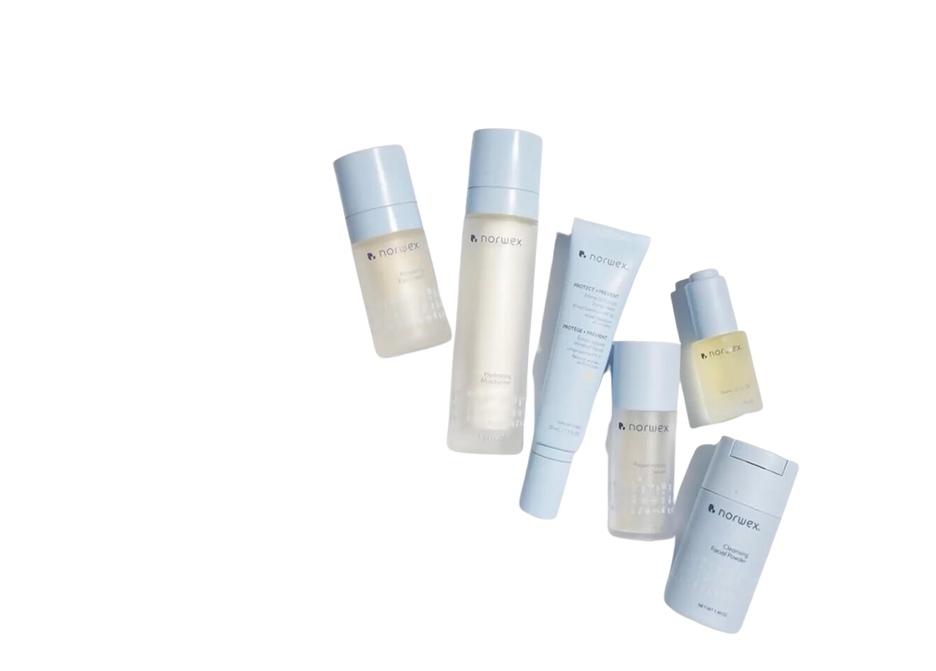



Or perhaps you'd love to help us share this cleaner, safer, better skincare with others?
Ask your consultant about opening your own Norwex consultant account! We would love to welcome you to Norwex & to the
Planet Green Team!
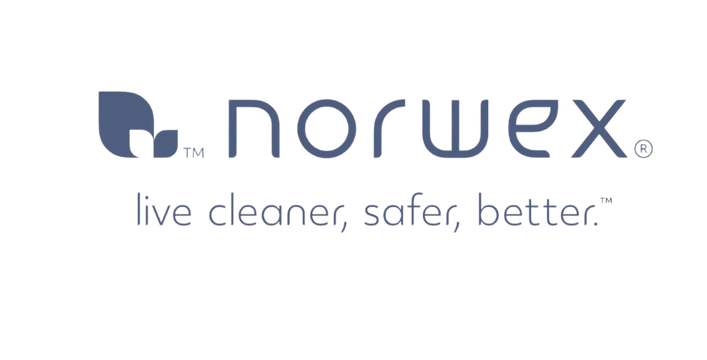




Why does CLEAN matter?
• Within 26 seconds after exposure to chemicals, such as those found in cleaning products, traces of these chemicals can be found in every organ in the body.
• 150 chemicals found in the home are connected to allergies, birth defects, cancer and psychological
disorders.
• The average American uses about 25 gallons of products with hazardous chemicals per year in their
home...a major portion of these can be found in household cleaning products.
• No health information is available for more than 80% of the industrial chemicals in everyday-use products.
• Today 300 synthetic chemicals are found in every one of our bodies.
• Research shows that even newborn babies have synthetic chemicals passed on from their mothers.
• Since 1901, cancer rates have increased from only 1 in 8,000 Americans, to 1 in 3 today!
Sources: Environmental Protection Agency, Public Interest Research
Group, HealthyStuff.org, Consumer Protection Agency, US House
of Representatives Report, The Merck Index, Prosperity without Pollution, CHEC’s Health House,
REACH (Registration, Evaluation, and Authorization of Chemicals, a European Union program), American Cancer Society, Environmental Protection Agency.
88 chemicals
Since 2009, 595 cosmetics manufacturers reported using
in more than 73,000 products, that have been linked to cancer, birth defects or reproductive harm.







Our Skin’s Role in Hormones!
• Nearly 100% of post-menopausal estrogen is produced in the skin!
• The skin functions as an endocrine organ, producing hormones for the body.
• Hormones produced by the skin include IGF-1, Thyroid hormones, Human Growth Hormone, & various neurotransmitters.
• The skin has its own feedback loop that regulates hormone function.
• Substances applied to the skin are processed through this hormone factory & feedback loop.
• Approximately 60-95% of what is applied to the skin can be absorbed into the bloodstream.
• Cosmetics lack regulations & may contain hormones & endocrine disruptors.
“Although Congress has since then given the FDA the power to ensure that food additives, color additives and pesticides pose “no harm” from repeat exposures, Congress has not given the agency the same authority to regulate the chronic risks posed by chemicals and contaminants in
Instead, the FDA largely relies on the personal care products industry to regulate itself.”
cosmetics

Body Burden & How it Happens
• Dermal Absorption: Skin contact with chemicals, like those in personal care products, cosmetics, or cleaning agents.
• Inhalation: Breathing polluted air, which may contain toxins from industrial processes, vehicle emissions, or indoor air pollutants such as volatile organic compounds (VOCs).
• Ingestion: Consuming contaminated food & water, such as pesticides found on fruits & vegetables or chemicals in drinking water.
• Occupational Exposure: Certain occupations expose workers to high levels of toxins, such as those in manufacturing, mining, agriculture, or healthcare.
• Environmental Exposure: Living in proximity to industrial areas, waste sites, or heavily polluted regions can lead to exposure.
• Bioaccumulation: Some toxins, like mercury & persistent organic pollutants (POPs) can accumulate in the food chain. When we consume contaminated seafood or animal products, these can accumulate in our bodies over time.
• Lifestyle Choices: Smoking, alcohol consumption, and the use of recreational drugs can introduce harmful substances into the body.
• Plastic & Microplastics: These may contain additives or pollutants that leach into food or water, contributing to body burden.
• Personal Care Products: Some personal care products contain chemicals that can be absorbed through the skin & contribute to body burden.
• Exposure in the Womb: Pregnant women can transfer toxins to their unborn children, leading to an early-life body burden.
In addition to the risks posed by intentionally added ingredients, cosmetics can be contaminated with
including arsenic, cadmium, lead, mercury and nickel.
heavy metals

Under the current law, the FDA has little authority to review chemicals in cosmetics and other personal care products. Personal care products companies do NOT have to register with the FDA, provide the FDA with ingredient statements, adopt Good Manufacturing Practices, or GMPs, report adverse events to the FDA, or provide the FDA with access to
safety records.

of consumers believe chemicals in cosmetics are already reviewed by the FDA, according to polling conducted by American Viewpoint and the Mellman Group in 2016.
Two-Thirds
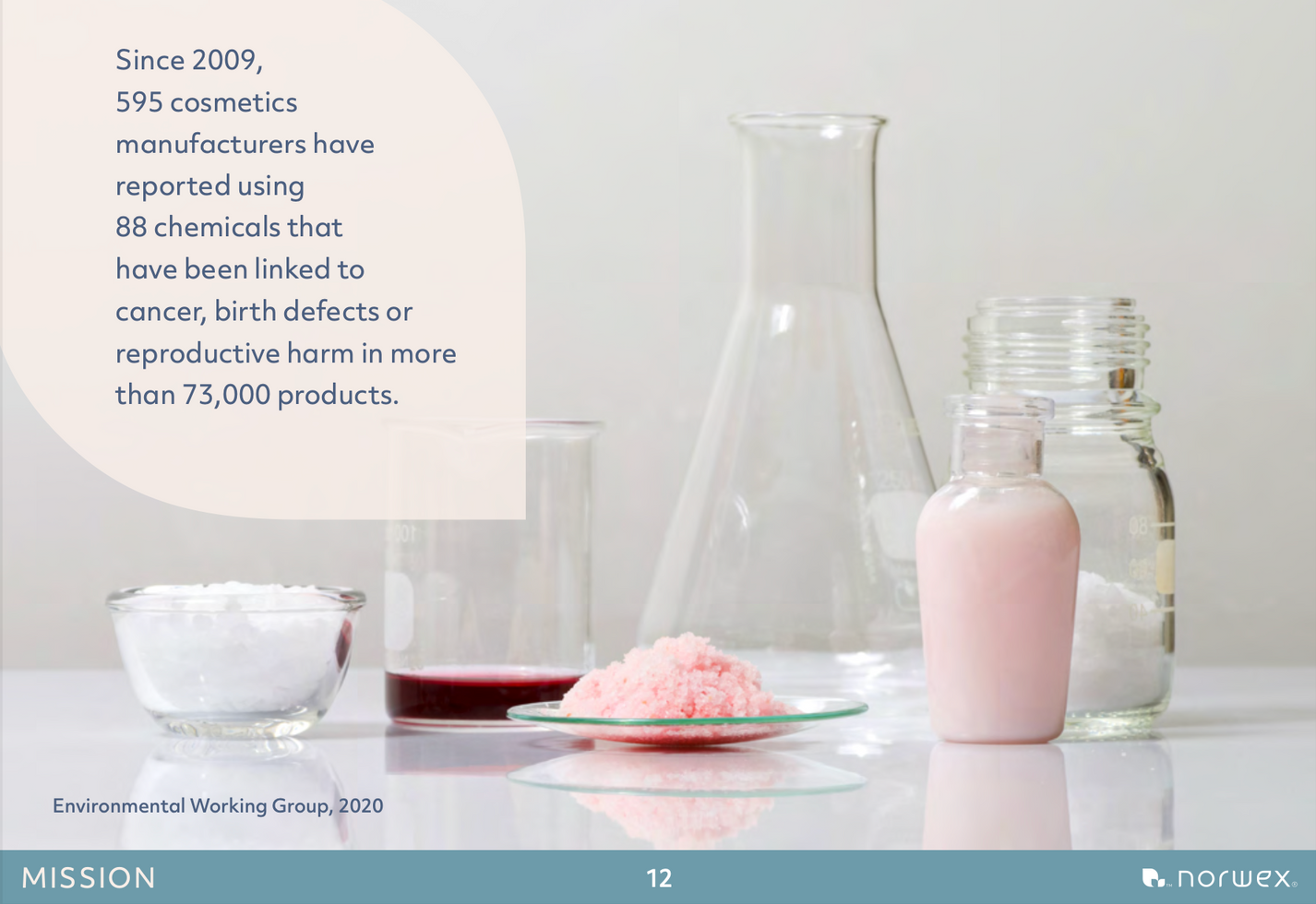
Chemicals used in personal care can be absorbed directly into the
with some lingering well past application.
bloodstream
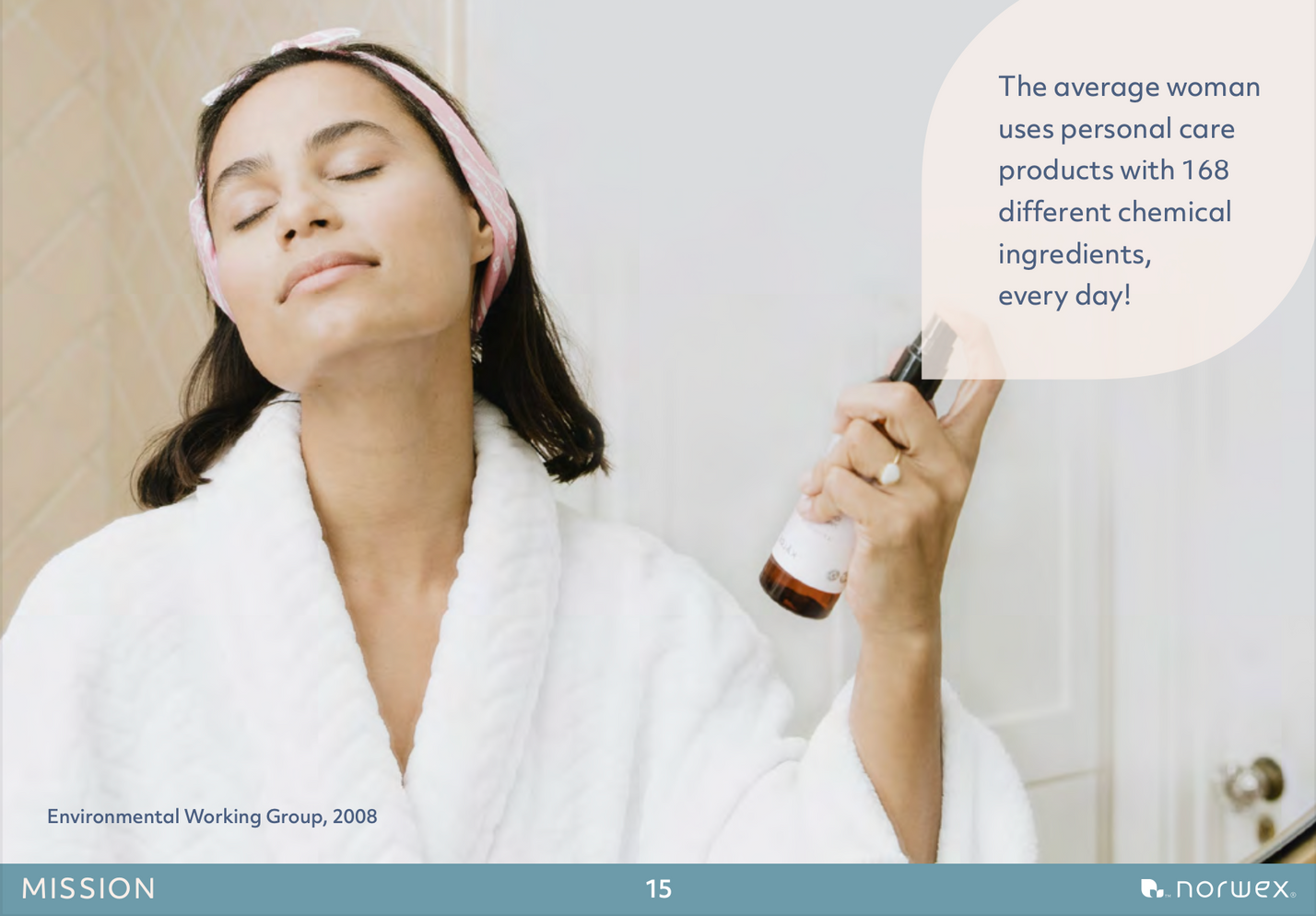
The U.S. has also fallen far behind our international trading partners in the
of cosmetics.
regulation
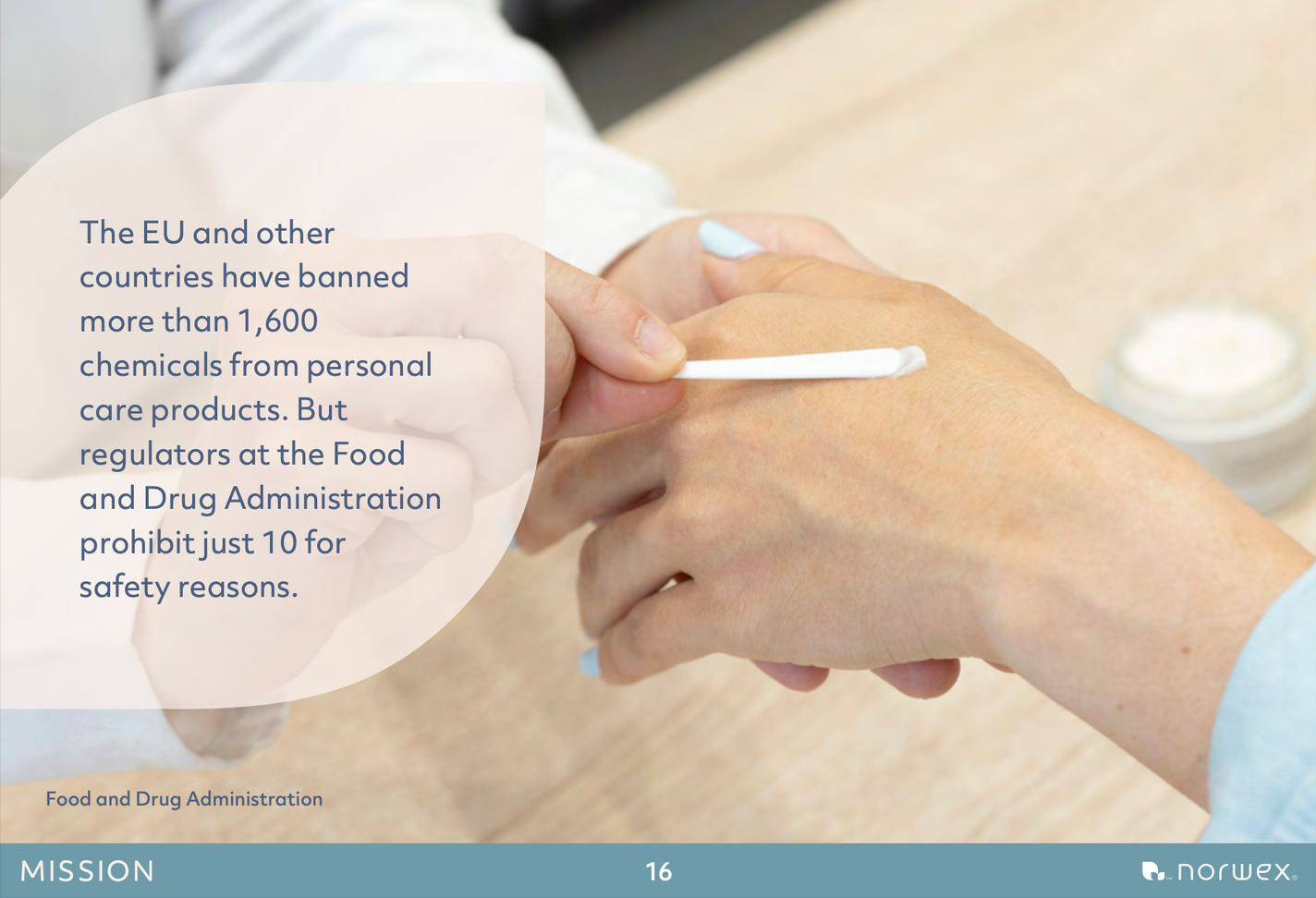
least
Personal Care and Cosmetics are one of the
regulated categories of consumer products.
